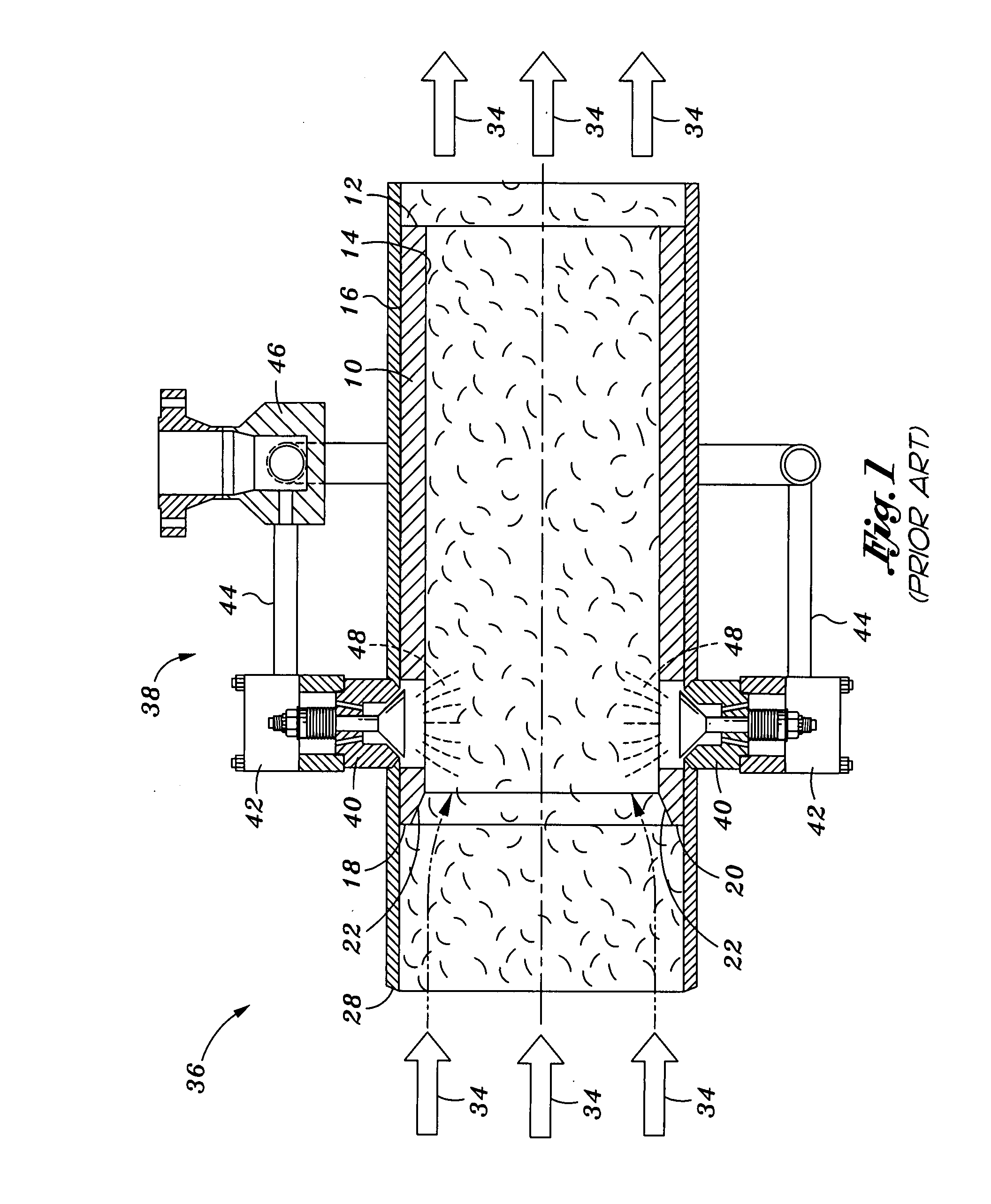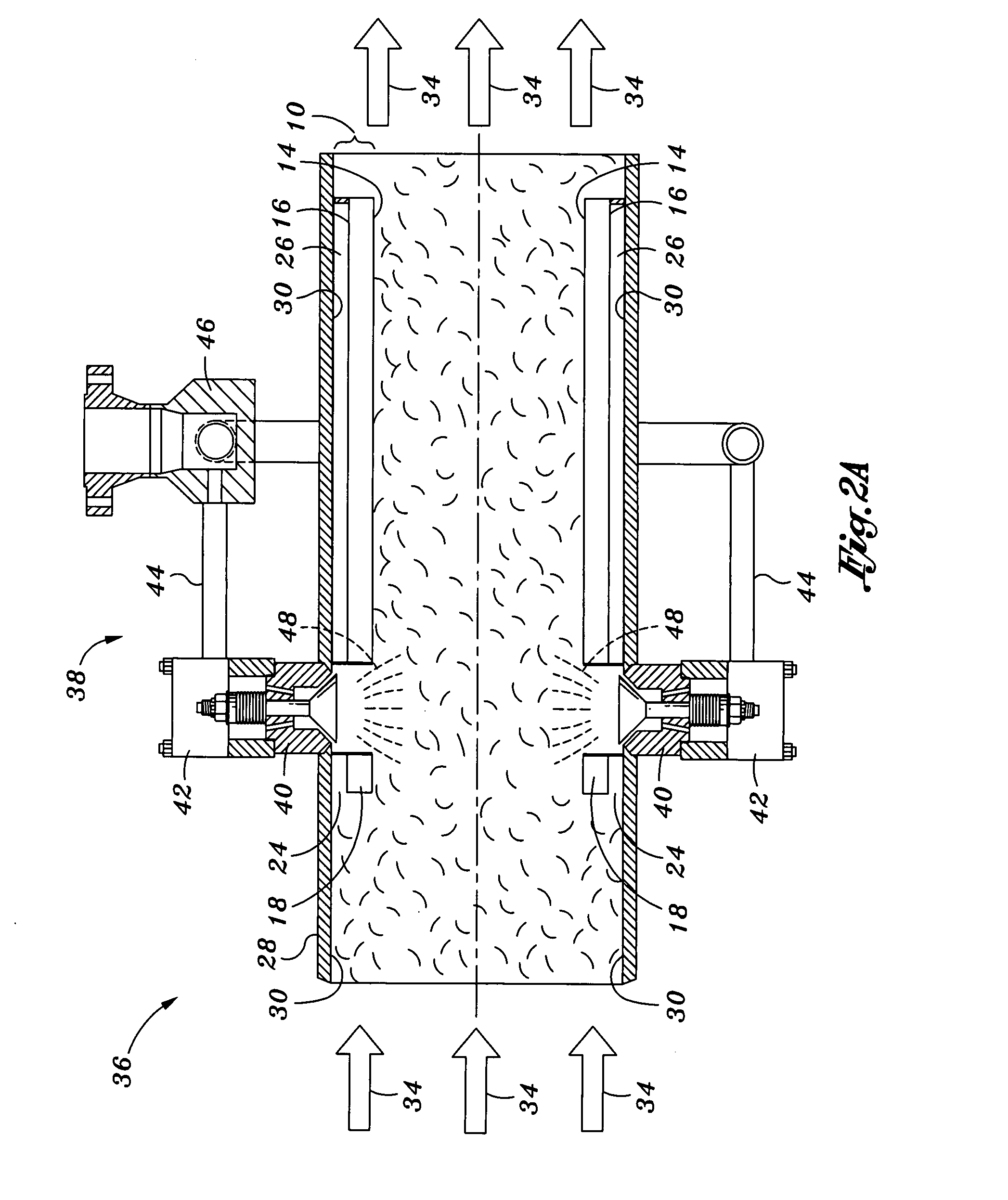Desuperheater muffler
a superheater and muffler technology, applied in the direction of valve details, valve arrangements, valve members for absorbing fluid energy, etc., can solve the problems of high construction and assembly cost of devices, high device complexity, and failure to meet the needs of use, so as to enhance evaporation of cooling water, enhance acoustic attenuation, and increase turbulence
- Summary
- Abstract
- Description
- Claims
- Application Information
AI Technical Summary
Benefits of technology
Problems solved by technology
Method used
Image
Examples
Embodiment Construction
[0018]Referring now to the drawings wherein the showings are for purposes of illustrating preferred embodiments of the present of the invention and not for purposes of limiting the same, shown in the figures are longitudinal sectional views of a desuperheating device 38 incorporating a liner system 10. A prior art version of the liner system 10 is shown in FIG. 1 which illustrates a liner 14 wherein an outer liner wall 16 thereof is disposed in abutting contact with an inner pipe wall 30 of a steam pipe 28 of the desuperheating device 38. In contrast, FIGS. 2A-2B illustrate a liner system 10 of the present invention wherein the liner 12 is disposed in spaced relation to the inner pipe wall 30 such that an annular resonator cavity 24 is formed between the liner 12 and the steam pipe 28 for attenuating noise associated with a flow of superheated steam 34 passing through the steam pipe 28, as will be described in greater detail below.
[0019]The desuperheating device 38 may be constructe...
PUM
 Login to View More
Login to View More Abstract
Description
Claims
Application Information
 Login to View More
Login to View More - R&D
- Intellectual Property
- Life Sciences
- Materials
- Tech Scout
- Unparalleled Data Quality
- Higher Quality Content
- 60% Fewer Hallucinations
Browse by: Latest US Patents, China's latest patents, Technical Efficacy Thesaurus, Application Domain, Technology Topic, Popular Technical Reports.
© 2025 PatSnap. All rights reserved.Legal|Privacy policy|Modern Slavery Act Transparency Statement|Sitemap|About US| Contact US: help@patsnap.com



